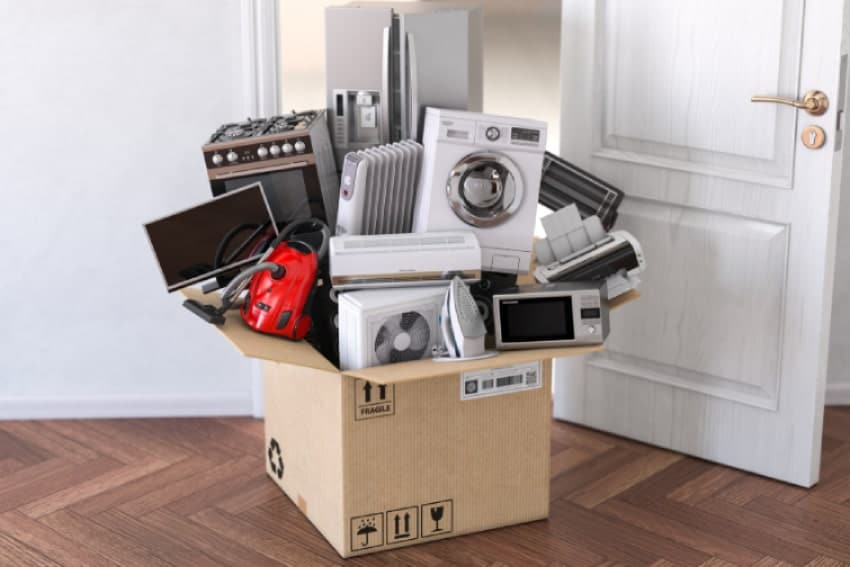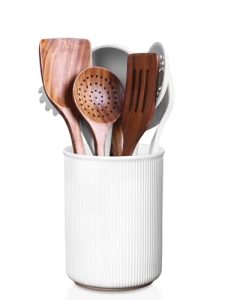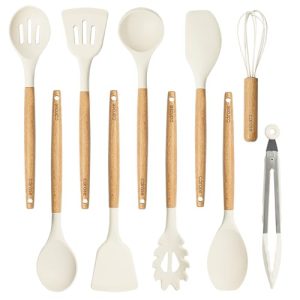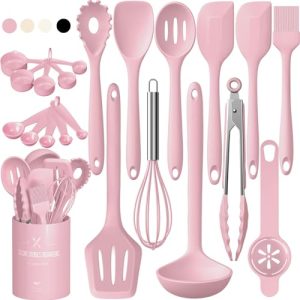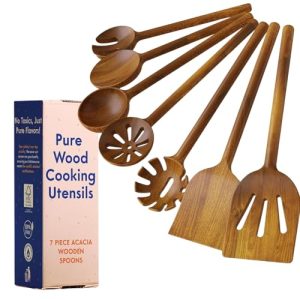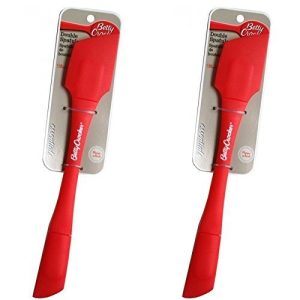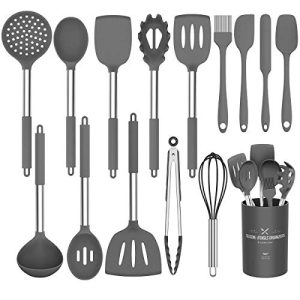Are you gearing up for a move or simply looking to reorganize your kitchen space? Packing kitchen appliances can feel like a daunting task, but it doesn’t have to be.
Imagine the peace of mind knowing that your cherished blender, coffee maker, and other gadgets are safely packed and ready to use in your new home. You might wonder, “What is the best way to pack these appliances to avoid any damage?
” This article is your ultimate guide to mastering the art of packing kitchen appliances efficiently and effectively. By the end, you’ll have the confidence and know-how to protect your valuable items, saving you time and stress. Ready to dive in and discover the secrets to a smooth packing experience? Let’s get started!

Credit: www.youtube.com
Essential Packing Materials
Packing kitchen appliances can be a daunting task. Ensuring they arrive safely requires the right materials. Using proper packing materials prevents damage during transit. Let’s explore the essentials.
Choosing The Right Boxes
Start with sturdy boxes. Choose ones that fit your appliances snugly. Avoid oversized boxes; they allow too much movement. Small appliances fit well in medium-sized boxes. For larger items, opt for heavy-duty boxes.
Protective Wraps And Padding
Bubble wrap is your best friend for packing. Use it to wrap fragile parts. Foam sheets add extra protection. Old newspapers can fill gaps in boxes. Ensure no part of the appliance is exposed.
Labeling Supplies
Use clear labels for each box. Write the contents and handling instructions. “Fragile” or “This Side Up” labels help movers. Colored markers can differentiate kitchen boxes. Proper labeling prevents mishandling and confusion.
Organizing Appliances
Organizing kitchen appliances can be a challenging task during a move. Proper organization ensures the appliances remain safe and undamaged. It also helps in reducing clutter and makes unpacking easier. Understanding how to sort and group these items will save time and stress.
Sorting By Size And Fragility
Start by sorting appliances based on their size. Large items like microwaves require special attention. Smaller gadgets such as blenders or mixers can be packed together. It’s crucial to consider the fragility of each appliance. Fragile items like glass coffee makers need extra protection. Use bubble wrap for delicate surfaces. Secure them with packing tape to prevent movement.
Grouping Similar Items
Grouping similar items simplifies packing and unpacking. Place all baking appliances together. Keep cooking gadgets in one box. This method helps in finding items quickly when setting up your new kitchen. Label boxes clearly for easy identification. Use markers or stickers to designate categories. This approach minimizes confusion during the moving process.
Packing Techniques For Small Appliances
Proper packing of small kitchen appliances saves space and prevents damage. These appliances often have delicate parts that require careful handling. Understanding the best packing techniques ensures they arrive safely at their destination.
Securing Loose Parts
Many small appliances have detachable parts. Blender blades, coffee machine filters, and mixer attachments need special attention. Secure these loose parts to prevent movement during transit. Place them in resealable plastic bags to keep everything organized. Label each bag for easy identification later.
Using Bubble Wrap Effectively
Bubble wrap provides excellent protection. Wrap each appliance thoroughly to cushion impacts. Use multiple layers if necessary. Seal the wrap with tape to keep it in place. Pay extra attention to fragile parts and corners. Bubble wrap reduces the risk of scratches and dents.
Packing Techniques For Large Appliances
Safely packing kitchen appliances involves using sturdy boxes and proper padding. Securely wrap each item to prevent damage. Label boxes clearly for easy unpacking.
Packing large kitchen appliances requires proper techniques. Careful preparation ensures their safety during a move. This process involves disassembly, handling, and securing heavy equipment. Let’s explore effective methods to pack large appliances.
Preparing For Disassembly
Before packing, clean all appliances thoroughly. Remove any food residues or debris. Unplug electrical appliances from power sources. Let them cool or defrost as needed. Refer to the user manual for disassembly instructions. Keep screws and small parts in labeled bags. Secure any loose parts with tape. This prevents movement during transit.
Handling Heavy Equipment
Heavy appliances need careful handling. Use a dolly or hand truck for transport. Lift with your legs, not your back. Always have someone to assist with moving. Wrap appliances in protective padding or blankets. This reduces the risk of scratches or dents. Secure them with sturdy ropes or straps. Ensure they are tightly fastened in the moving vehicle. This prevents shifting during transit. `
Safety Tips
Safeguarding kitchen appliances during a move involves careful packing. Use sturdy boxes and wrap each item in bubble wrap or towels. Secure cords and detachable parts separately to prevent damage. Label boxes clearly for easy unpacking in your new kitchen.
Packing kitchen appliances for a move can be daunting, but safety should always be your top priority. It’s not just about getting your appliances from point A to B, but ensuring they arrive in perfect condition, ready to serve you again. Here are some essential safety tips to guide you in packing your kitchen appliances efficiently and securely.
Avoiding Common Mistakes
Mistakes during packing can lead to damaged appliances or injuries. One common mistake is not unplugging appliances in advance. Always disconnect them at least 24 hours before packing to let them cool down and dry completely. Another error is failing to label boxes. Unlabeled boxes can cause confusion during unpacking, leading to mishandling of fragile items. Use clear labels to identify each appliance and mark fragile ones. You might be tempted to overpack boxes to save space. This can lead to broken appliances or strained backs. It’s better to use more boxes than to risk damage or injury.
Ensuring Safe Transport
Safe transport starts with choosing the right materials. Use sturdy boxes and bubble wrap for cushioning. This prevents appliances from shifting and breaking during transit. Secure each box with heavy-duty tape. This ensures the boxes remain sealed and protect the contents inside. Don’t rely on flimsy tape that might give way. Consider the placement of boxes in the moving truck. Heavy appliances should go at the bottom, lighter ones on top. This prevents crushing and makes unloading easier. Think about how you’ll handle fragile items. Will you carry them yourself or trust the movers? Sometimes, personal transport ensures extra care. Are you ready to pack your kitchen appliances safely? These tips can make the difference between a smooth move and a stressful one. What’s your strategy for packing delicate kitchen gadgets?

Credit: moving.tips
Unpacking Strategy
Unpacking kitchen appliances requires a strategic approach for a smooth setup. Disorganized unpacking can lead to chaos and damage. Planning your unpacking ensures efficiency and safety. Follow these steps to set up your kitchen with ease.
Setting Up The Kitchen
Start by identifying the layout of your kitchen. Consider the placement of each appliance. Determine which appliances you use daily. Place them in accessible locations. Store less-used items in cabinets or on shelves. Keep the countertop clutter-free for a clean look. This approach optimizes workflow and convenience.
Checking For Damages
Inspect each appliance as you unpack it. Look for visible signs of damage. Check electrical cords and plugs for wear. Test appliances to ensure they work properly. Report any damages to the moving company immediately. Doing this prevents potential safety hazards. It also ensures appliances are in working order.

Credit: www.youtube.com
Frequently Asked Questions
How To Best Pack Kitchen Appliances?
Use sturdy boxes and bubble wrap for protection. Disassemble parts and label them. Secure cords with twist ties. Place heavier items at the bottom. Fill gaps with packing paper to prevent movement. Seal boxes tightly and label them “fragile” for safe handling.
How To Pack Kitchen Supplies So They’re Not Heavy?
Use small boxes for heavy items like canned goods. Wrap fragile items in bubble wrap or towels. Distribute weight evenly by mixing heavy and light items. Label boxes clearly for easy unpacking. Use sturdy boxes to prevent breakage.
What Is The Hardest Room To Pack When Moving?
The kitchen is often the hardest room to pack due to its fragile items and numerous utensils. Organizing and safely packing glassware, dishes, and small appliances requires extra care and time. Proper labeling and sorting can simplify the process and prevent breakage during the move.
How To Wrap Appliances For Move?
Use bubble wrap to protect appliances. Secure with packing tape. Cover with moving blankets. Ensure cords are taped. Label boxes clearly.
Conclusion
Packing kitchen appliances can be simple with the right steps. Start by gathering sturdy boxes and bubble wrap. Clean each appliance thoroughly before packing. Use bubble wrap to protect fragile parts. Label each box clearly. This helps in easy unpacking later.
Arrange heavy appliances at the bottom of the box. Place lighter ones on top. Secure the box with strong tape. Always remember to handle appliances with care. Being organized makes moving less stressful. With these tips, your kitchen appliances will stay safe during the move.
Happy packing!
